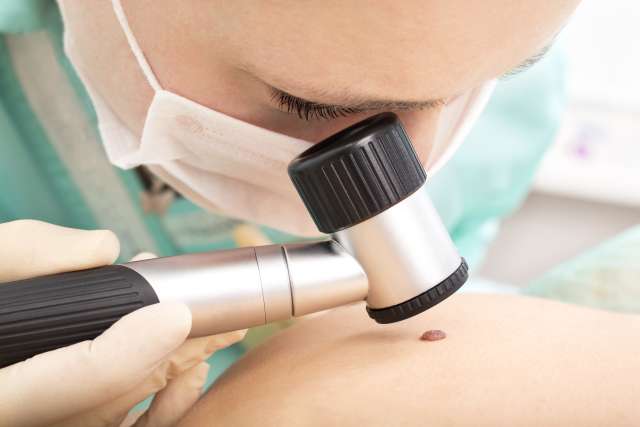Dear Doctors: I turned 46 years old last winter, and all of a sudden I started getting skin tags. I worried it might be a sign of skin cancer, but my sister insists they're harmless. Is that true? There are a few on my neck that keep getting irritated by my clothes and jewelry. Is there any way to get rid of them?
Dear Reader: We'll begin by reassuring you that your sister is correct. Skin tags, which are also known as acrochordons, are not a sign of cancer. Other than looking a bit odd, and potentially getting in the way of clothing or jewelry, they are typically harmless.
For those who aren't familiar, skin tags look like fleshy tubes or bumps that sit on the surface of the skin. They're often around 2 millimeters long, which is about the size of a grain of rice, but they can grow a bit larger.
Skin tags are malleable, with a springy texture. They move around quite easily, and touching them doesn't cause pain or discomfort. They are often the same color as the surrounding skin, but in certain cases can appear slightly darker. Older skin tags may begin to take on a brown or russet hue. Some can be lumpy and uneven, with a rough, warty texture. In those cases, it's a good idea to have a doctor take a look. You want to be sure that it's a skin tag and not a precancerous growth.
Up to two-thirds of all adults will develop skin tags. The condition affects women and men equally, and it becomes more common with age. The cause of these fleshy protrusions remains unknown, but genetics is believed to play a role. When you have family members with the condition, you have an increased likelihood of developing it as well.
Skin tags are seen more often in individuals who are overweight or obese. They often arise in areas where there is rubbing or chafing, such as the creases of the armpits, beneath the breasts, on the eyelids, along the neck and around the groin.
Recent research suggests a possible link between skin tags and metabolic syndrome, high blood pressure and insulin resistance. The connections to those health problems mean it's worth talking with a doctor about a sudden or marked increase in the number of skin tags.
Because they are neither harmful nor dangerous, it is not necessary to have skin tags removed. However, some people choose to do so. This may be for cosmetic reasons, or because, as in your case, their location makes them a nuisance. It's never a good idea to try to remove them yourself. Skin tags are vascular, which means they have a blood source. They sometimes also have nerves. Cutting them off with scissors is not only painful, but it can also lead to uncontrolled bleeding. There is also a risk the area can become infected.
A doctor or dermatologist can safely and easily remove skin tags with minimal pain and scarring. This is done by snipping them off with a sharp, sterile blade, freezing with liquid nitrogen or burning them off with cautery.
(Send your questions to [email protected], or write: Ask the Doctors, c/o UCLA Health Sciences Media Relations, 10960 Wilshire Blvd., Suite 1955, Los Angeles, CA, 90024. Owing to the volume of mail, personal replies cannot be provided.)





